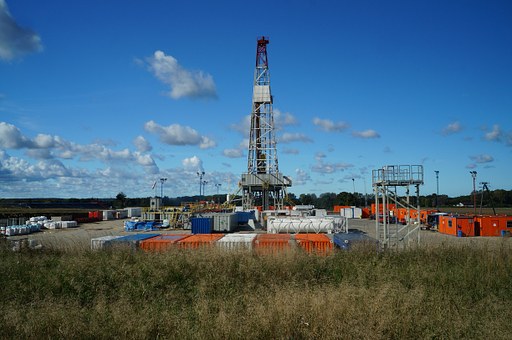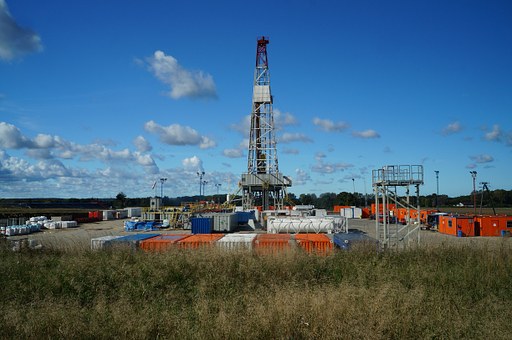
maxpixel
The article notes that in recent years there have been clear signs that the previous growth rates of productivity of oil shale oil production in the US is now in in the past.
FT note that the production performance and oil production volumes themselves ceased to grow in key fields such as the Anadarko basin, the Eagle Ford and Niobrara formations, and the Perm basin. In addition to reducing production volumes in the main shale formations, there is also no noticeable reduction in time that is spent on drilling new wells.
Another factor in the decline in the productivity of shale mining was depletion of the former easier to develop wells and the transition to more problematic areas of shale formations. According to the French company Kayrros, productivity of oil production from the shales of the Perm basin has ceased to grow in recent years, and, "probably," even began to decline.
Another potentially troubling factor for the shale industry is a decrease in the amount of lending to the industry. Contrary to popular myths (which are largely similar to the misconceptions that the United States is a net oil exporter - according to the EIA, US oil imports amounted to 7.85 million barrels per day), the US slate industry is a loss-making business. Companies do not generate a net cash flow , they spend more than they earn, staying afloat by hedging future oil supplies, borrowing, and selling their shares.
The history of shale mining began to unfold in the United States at the beginning of the XIX century.
It should be added that in recent years, in addition to using different types of mixtures of sand, water and certain chemical compounds, many American companies have also been actively used the waterless fracking method, when a mixture of liquefied gas that is supplied under pressure is used as a means for splitting the formation. This method is also known as propane freshening.
However, the emergence of this technology and the development of existing methods of hydraulic fracturing, judging by the incoming data, do not allow shale companies to achieve the same breakthrough that they made earlier.
In addition to reaching the limits of technological opportunities for the production of hydrocarbons from solid seams, there is another potentially key aspect of the development of the US shale industry - leveraging low-cost debt financing. The slate revolution in many respects "coincided" in time with a period of record low interest rates in the US.
Interest rate preservation by the Federal Reserve System at a record low after the 2008 financial crisis was one of the factors that allowed to continue raising funds for shale companies, many of which were considered debt securities and were still considered high-risk (or junk bonds).
In addition to such factors as the depletion of easily accessible shale deposits, getting to certain limits for the efficiency of fracking, propane melting, re-fracking and other technologies, increase in the cost of lending has become an additional factor that prevents continuation of the "shale revolution" at the same rates that were demonstrated before the collapse of oil prices beginning in 2014.
In the period from 2009 to 2015, interest rates in the US remained in the range 0-0.25%. As of October 2017, they rose to 1-1.25%, while it is expected that the Fed will continue to raise them.
source: ft.com
FT note that the production performance and oil production volumes themselves ceased to grow in key fields such as the Anadarko basin, the Eagle Ford and Niobrara formations, and the Perm basin. In addition to reducing production volumes in the main shale formations, there is also no noticeable reduction in time that is spent on drilling new wells.
Another factor in the decline in the productivity of shale mining was depletion of the former easier to develop wells and the transition to more problematic areas of shale formations. According to the French company Kayrros, productivity of oil production from the shales of the Perm basin has ceased to grow in recent years, and, "probably," even began to decline.
Another potentially troubling factor for the shale industry is a decrease in the amount of lending to the industry. Contrary to popular myths (which are largely similar to the misconceptions that the United States is a net oil exporter - according to the EIA, US oil imports amounted to 7.85 million barrels per day), the US slate industry is a loss-making business. Companies do not generate a net cash flow , they spend more than they earn, staying afloat by hedging future oil supplies, borrowing, and selling their shares.
The history of shale mining began to unfold in the United States at the beginning of the XIX century.
It should be added that in recent years, in addition to using different types of mixtures of sand, water and certain chemical compounds, many American companies have also been actively used the waterless fracking method, when a mixture of liquefied gas that is supplied under pressure is used as a means for splitting the formation. This method is also known as propane freshening.
However, the emergence of this technology and the development of existing methods of hydraulic fracturing, judging by the incoming data, do not allow shale companies to achieve the same breakthrough that they made earlier.
In addition to reaching the limits of technological opportunities for the production of hydrocarbons from solid seams, there is another potentially key aspect of the development of the US shale industry - leveraging low-cost debt financing. The slate revolution in many respects "coincided" in time with a period of record low interest rates in the US.
Interest rate preservation by the Federal Reserve System at a record low after the 2008 financial crisis was one of the factors that allowed to continue raising funds for shale companies, many of which were considered debt securities and were still considered high-risk (or junk bonds).
In addition to such factors as the depletion of easily accessible shale deposits, getting to certain limits for the efficiency of fracking, propane melting, re-fracking and other technologies, increase in the cost of lending has become an additional factor that prevents continuation of the "shale revolution" at the same rates that were demonstrated before the collapse of oil prices beginning in 2014.
In the period from 2009 to 2015, interest rates in the US remained in the range 0-0.25%. As of October 2017, they rose to 1-1.25%, while it is expected that the Fed will continue to raise them.
source: ft.com


















